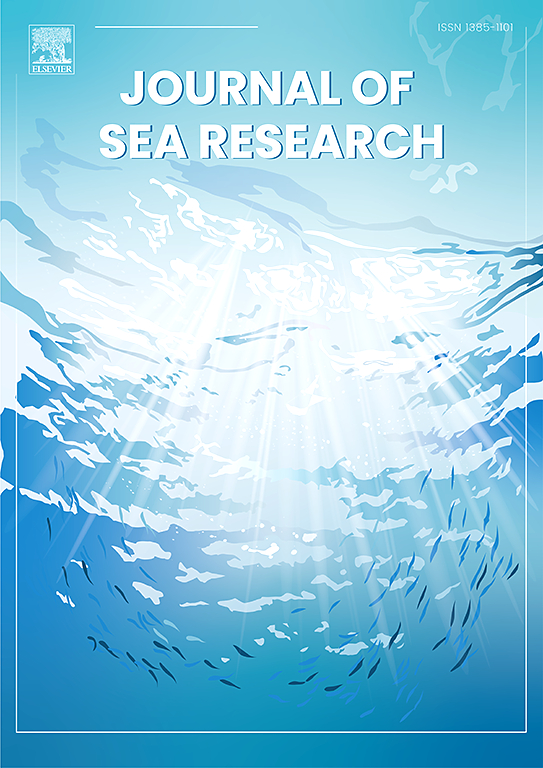Seagrasses in coastal wetlands of the Algarve region (southern Portugal): Past and present distribution and extent
IF 2.9
4区 地球科学
Q2 MARINE & FRESHWATER BIOLOGY
引用次数: 0
Abstract
The global biodiversity crisis urges to update the distribution maps of natural habitats, especially those that are in rapid decline and play a key role in ecosystem functioning, such as seagrasses. In Portugal, seagrass meadows have declined substantially since the 1980s and are considered one of the most endangered marine habitats. Here we aimed to 1) compile records on the distribution and area extent of seagrass meadows in the four wetlands of the Algarve region (southern Portugal) with historical occurrence of seagrasses, based on a systematic review, and 2) update the distribution maps and area extent of seagrass meadows in this region using a combination of manual and machine learning mapping techniques. The systematic review showed a general lack of data on the distribution of seagrass meadows in the Algarve, with patchy information at different times and using incomparable mapping techniques. Based on the updated mapping from 2019 to 2023, well-developed seagrass meadows were only found in the Ria Formosa lagoon and the Guadiana estuary. In the Ria de Alvor, some sparce scattered patches of seagrass were observed in the intertidal zone, while no seagrass was found in the Arade estuary. The total extent of seagrass in the Algarve region was estimated at 1231 ha, with nearly all (99 %) occurring in the Ria Formosa, where 85 % was intertidal. Although assessing temporal trends remains challenging due to methodological differences and data limitations, the estimated 20 % decline and ongoing pressures on seagrass meadows in Algarve wetlands underscore the urgent need for continuous, standardized monitoring of their distribution, extent, and condition.
阿尔加维地区(葡萄牙南部)沿海湿地的海草:过去和现在的分布和范围
全球生物多样性危机促使我们更新自然栖息地的分布图,特别是那些正在迅速减少并在生态系统功能中发挥关键作用的自然栖息地,如海草。在葡萄牙,自20世纪80年代以来,海草草甸大幅减少,被认为是最濒危的海洋栖息地之一。本研究的目的是:1)在系统回顾的基础上,对葡萄牙南部阿尔加维地区(Algarve)四个具有历史海草发生的湿地的海草草甸分布和面积范围进行记录;2)采用人工和机器学习相结合的制图技术,更新该地区海草草甸分布图和面积范围。系统审查显示,普遍缺乏关于阿尔加维海草草甸分布的数据,不同时间的信息不完整,使用的是无与伦比的制图技术。根据2019年至2023年的更新地图,仅在Ria Formosa泻湖和Guadiana河口发现了发育良好的海草草甸。在Ria de Alvor潮间带发现了一些零星的海草斑块,而Arade河口则没有发现海草。阿尔加维地区的海草总面积估计为1231公顷,几乎全部(99%)发生在Ria Formosa,其中85%是潮间带。尽管由于方法差异和数据限制,评估时间趋势仍然具有挑战性,但阿尔加维湿地的海草草甸估计下降了20%,并面临持续的压力,这表明迫切需要对其分布、范围和状况进行持续、标准化的监测。
本文章由计算机程序翻译,如有差异,请以英文原文为准。
求助全文
约1分钟内获得全文
求助全文
来源期刊

Journal of Sea Research
地学-海洋学
CiteScore
3.20
自引率
5.00%
发文量
86
审稿时长
6-12 weeks
期刊介绍:
The Journal of Sea Research is an international and multidisciplinary periodical on marine research, with an emphasis on the functioning of marine ecosystems in coastal and shelf seas, including intertidal, estuarine and brackish environments. As several subdisciplines add to this aim, manuscripts are welcome from the fields of marine biology, marine chemistry, marine sedimentology and physical oceanography, provided they add to the understanding of ecosystem processes.
 求助内容:
求助内容: 应助结果提醒方式:
应助结果提醒方式:


